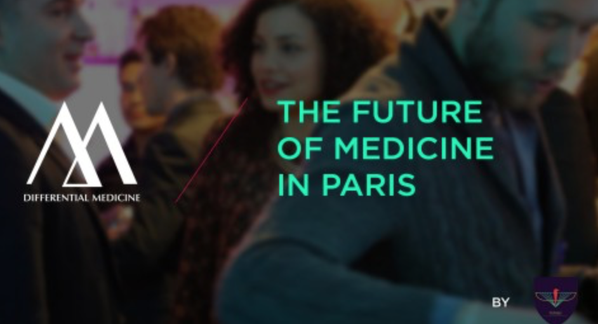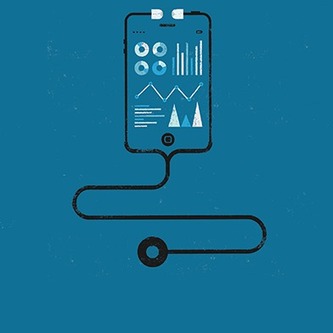After decades as a technological laggard, medicine has entered its data age. Mobile technologies, sensors, genome sequencing, and advances in analytic software now make it possible to capture vast amounts of information about our individual makeup and the environment around us. The sum of this information could transform medicine, turning a field aimed at treating the average patient into one that’s customized to each person while shifting more control and responsibility from doctors to patients.
The question is: can big data make health care better?
“There is a lot of data being gathered. That’s not enough,” says Ed Martin, interim director of the Information Services Unit at the University of California San Francisco School of Medicine. “It’s really about coming up with applications that make data actionable.”
The business opportunity in making sense of that data—potentially $300 billion to $450 billion a year, according to consultants McKinsey & Company—is driving well-established companies like Apple, Qualcomm, and IBM to invest in technologies from data-capturing smartphone apps to billion-dollar analytical systems. It’s feeding the rising enthusiasm for startups as well.
Venture capital firms like Greylock Partners and Kleiner Perkins Caufield & Byers, as well as the corporate venture funds of Google, Samsung, Merck, and others, have invested more than $3 billion in health-care information technology since the beginning of 2013—a rapid acceleration from previous years, according to data from Mercom Capital Group.
Source: www.technologyreview.com
It’s one of those thoughts many mHealth insiders and observers have at some point had: What if one could put the power of Watson analytics into a smartphone and interact with it like Apple’s Siri at the point of care?
Well, that specific dream moved closer to reality on Tuesday when Apple and IBM joined forces to create a mobile platform christened IBM Mobile First for iOS.
“For the first time ever we’re putting IBM’s renowned big data analytics at iOS users’ fingertips,” Apple CEO Tim Cook said in a prepared statement. “This is a radical step for enterprise and something that only Apple and IBM can deliver.”
IBM CEO Ginni Rometty added that the intention is to bring the same “innovations [that] have transformed our lives,” into the ways that people work, thereby “allowing people to re-imagine work, industries, and professions.”
To that end, the companies hope that IBM Mobile First for iOS will “transform enterprise mobility through a new class of business apps,” they explained.
It’s not all that often technology giants align and rattle off healthcare as one of their target verticals, much less that Apple joins forces with any of the IT old guard — which gives the partnership a booster shot of luster. And in an mHealth industry currently going like gangbusters with too many startups to count, the sheer scale that Apple and IBM bring at the very least has the potential for significant market-shaping.
Source: www.mhealthnews.com
Wearables, devices used to sense data and process it into information, are generating quite the buzz in healthcare these days. But down the line, does that buzz come with a sting?
In Wearable Tech News, Tony Rizzo reports wearable technology spending predictions of $50 billion by 2018. He also reports on a ground-breaking, glucose-sensing contact lens for diabetics that will be a “true solution for a very real medical problem that affects hundreds of millions of people.”
By 2016, wearable wireless medical device sales will reach more than 100 million devices, according to a Cisco blog on the future of mobility in healthcare. The importance of these devices is that healthcare professionals can access critical data via mobile apps before, during and after a patient’s hospitalization, thus boosting the speed and accuracy of patient care, the blog says.
The Age of Wearables has a few caveats, though – note that a doctor “can,” “could,” “may” or “potentially” be able to monitor a patient from a wearable, as the products are still under development. One product cites unpublished research as support, and another uses a modality, thermography, that the National Cancer Institute states has no additional benefit for breast cancer screening.
The new, intense focus on wearables is the engagement of the general public, both the ill and the well, and how they collect and transmit patient information to physicians and EHRs. This presents two challenges:
1. Are physicians prepared for this tidal wave of data and information?
2. What is the true cost of the data surge versus its benefits?
Like all healthcare information technology, wearables have huge potential – married to massive challenges.
Source: hitconsultant.net
New software could give people greater control over how their personal health information is shared between doctors and medical institutions—provided that enough health providers decide to use the system.
Today a patient’s data typically stays within a hospital group or doctor’s practice. If you get care elsewhere you are essentially a blank slate unless a special request for your data is made, in which case the entire record becomes accessible. But many patients may not want their entire medical history to be accessible by everyone they see, so there is pressure to develop tools that can be used to limit access. One tricky issue is that redacting details of a diagnosis may not remove all the clues as to that condition, such as prescribed drugs or lab tests.
A new tool developed by computer scientists at the University of Illinois can figure out which parts of a record may inadvertently reveal aspects of a patient’s medical history. The idea is that as data-sharing proposals advance, the patient would decide what parts of his or her record to keep private. A clinician would get advice from the technology on how to amend the record to ensure that this occurs.
The software bases its recommendations on a machine-learning analysis of many other medical records. This reveals what details could be associated with things like mental health episodes, past drug abuse, or a diagnosis of a sexually transmitted disease when the record is shared with another hospital or doctor. The tool could eventually automatically remove those additional details to keep that information confidential.
Source: www.technologyreview.com








